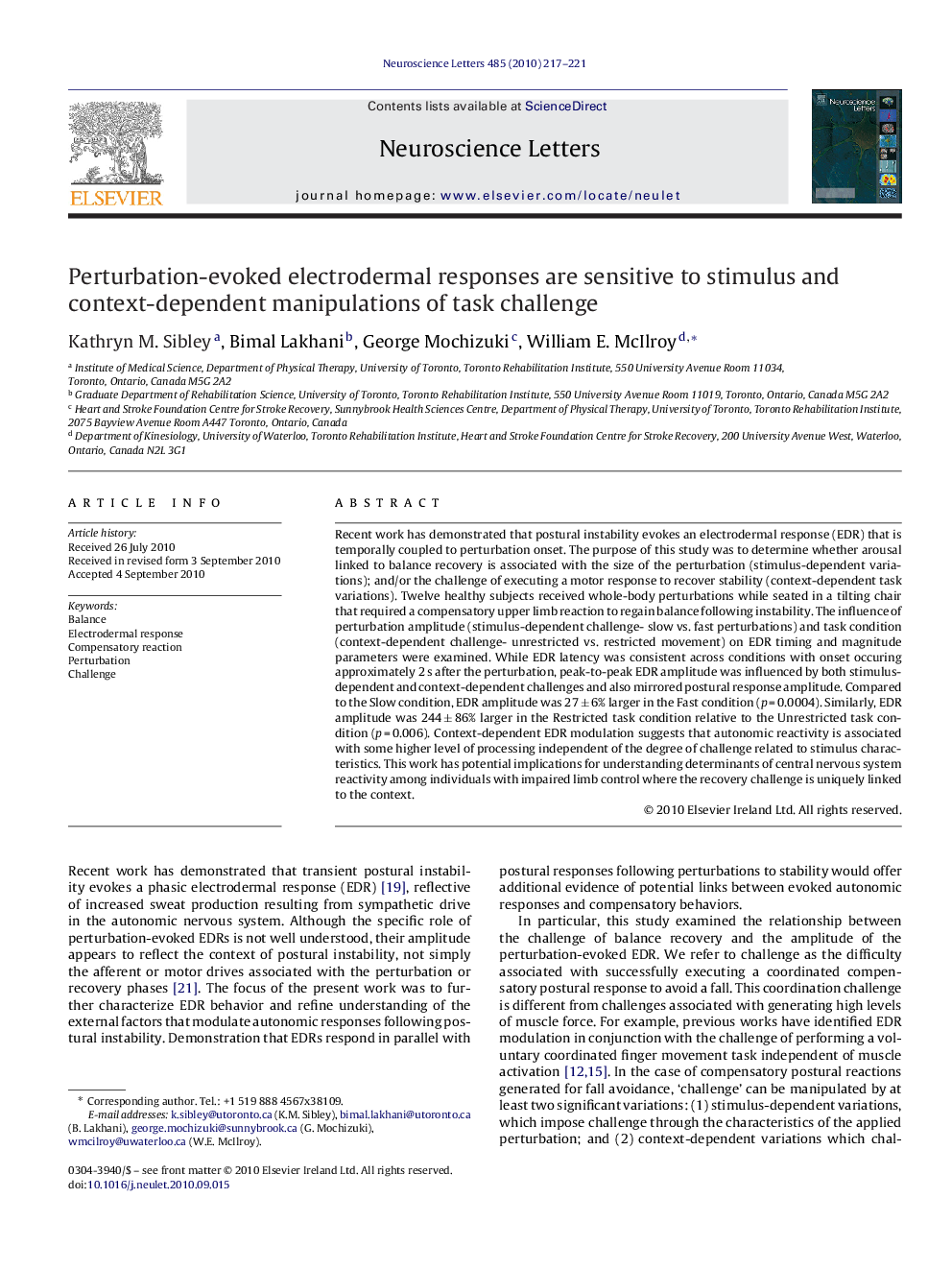| Article ID | Journal | Published Year | Pages | File Type |
|---|---|---|---|---|
| 4345656 | Neuroscience Letters | 2010 | 5 Pages |
Recent work has demonstrated that postural instability evokes an electrodermal response (EDR) that is temporally coupled to perturbation onset. The purpose of this study was to determine whether arousal linked to balance recovery is associated with the size of the perturbation (stimulus-dependent variations); and/or the challenge of executing a motor response to recover stability (context-dependent task variations). Twelve healthy subjects received whole-body perturbations while seated in a tilting chair that required a compensatory upper limb reaction to regain balance following instability. The influence of perturbation amplitude (stimulus-dependent challenge- slow vs. fast perturbations) and task condition (context-dependent challenge- unrestricted vs. restricted movement) on EDR timing and magnitude parameters were examined. While EDR latency was consistent across conditions with onset occuring approximately 2 s after the perturbation, peak-to-peak EDR amplitude was influenced by both stimulus-dependent and context-dependent challenges and also mirrored postural response amplitude. Compared to the Slow condition, EDR amplitude was 27 ± 6% larger in the Fast condition (p = 0.0004). Similarly, EDR amplitude was 244 ± 86% larger in the Restricted task condition relative to the Unrestricted task condition (p = 0.006). Context-dependent EDR modulation suggests that autonomic reactivity is associated with some higher level of processing independent of the degree of challenge related to stimulus characteristics. This work has potential implications for understanding determinants of central nervous system reactivity among individuals with impaired limb control where the recovery challenge is uniquely linked to the context.
Research highlights▶ The autonomic nervous systems’ role in compensatory postural control is unclear. ▶ EDRs were larger during fast perturbations that increased the challenge of recovery. ▶ EDRs were also larger when external constraints made recovery harder. ▶ This modulation suggests that a functional role for autonomic activity is possible.
